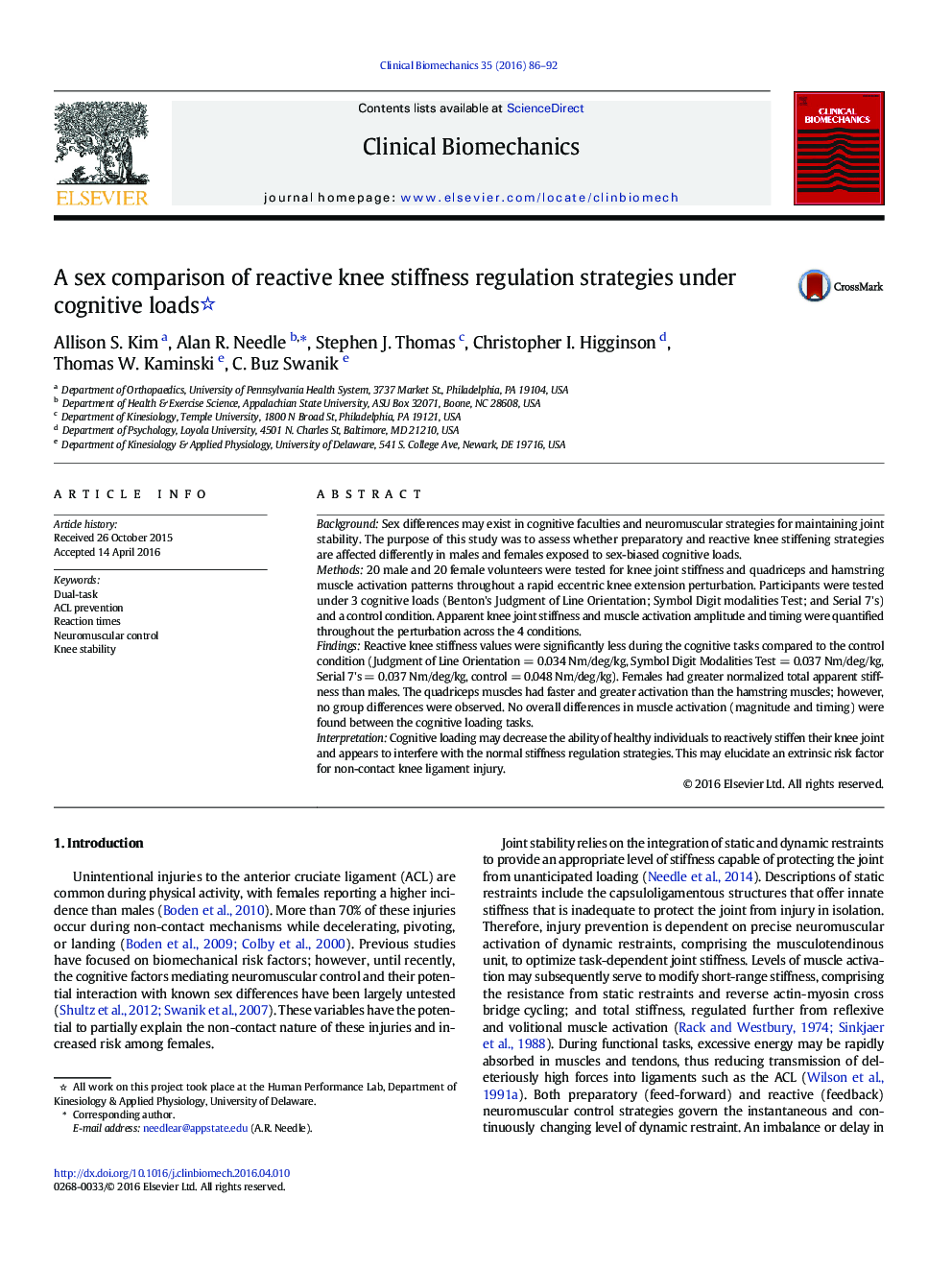| Article ID | Journal | Published Year | Pages | File Type |
|---|---|---|---|---|
| 4050111 | Clinical Biomechanics | 2016 | 7 Pages |
•Attentional demands may be considered an extrinsic risk factor for ACL rupture.•Cognitive loading decreased knee stiffness equally in males and females.•Quadriceps and hamstring muscle activity decreased 30–60% under cognitive loads.•Cognitive loading slowed muscle activation in both sexes by approximately 10%.
BackgroundSex differences may exist in cognitive faculties and neuromuscular strategies for maintaining joint stability. The purpose of this study was to assess whether preparatory and reactive knee stiffening strategies are affected differently in males and females exposed to sex-biased cognitive loads.Methods20 male and 20 female volunteers were tested for knee joint stiffness and quadriceps and hamstring muscle activation patterns throughout a rapid eccentric knee extension perturbation. Participants were tested under 3 cognitive loads (Benton's Judgment of Line Orientation; Symbol Digit modalities Test; and Serial 7's) and a control condition. Apparent knee joint stiffness and muscle activation amplitude and timing were quantified throughout the perturbation across the 4 conditions.FindingsReactive knee stiffness values were significantly less during the cognitive tasks compared to the control condition (Judgment of Line Orientation = 0.034 Nm/deg/kg, Symbol Digit Modalities Test = 0.037 Nm/deg/kg, Serial 7's = 0.037 Nm/deg/kg, control = 0.048 Nm/deg/kg). Females had greater normalized total apparent stiffness than males. The quadriceps muscles had faster and greater activation than the hamstring muscles; however, no group differences were observed. No overall differences in muscle activation (magnitude and timing) were found between the cognitive loading tasks.InterpretationCognitive loading may decrease the ability of healthy individuals to reactively stiffen their knee joint and appears to interfere with the normal stiffness regulation strategies. This may elucidate an extrinsic risk factor for non-contact knee ligament injury.
